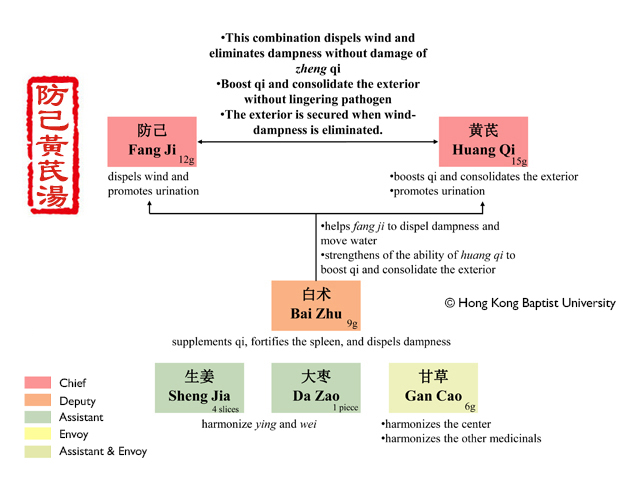
| Chief | Fang Ji |
| Boost qi and consolidate the exterior without lingering pathogen. The exterior is secured when wind-dampness is eliminated. |
| Chief | Huang Qi |
| Boost qi and consolidate the exterior without lingering pathogen. The exterior is secured when wind-dampness is eliminated. |
| Deputy | Bai Zhu |
| |
| Assistant | Sheng Jiang |
| |
| Assistant | Da Zao |
| |
| Assistant&Envoy | Gan Cao |
|